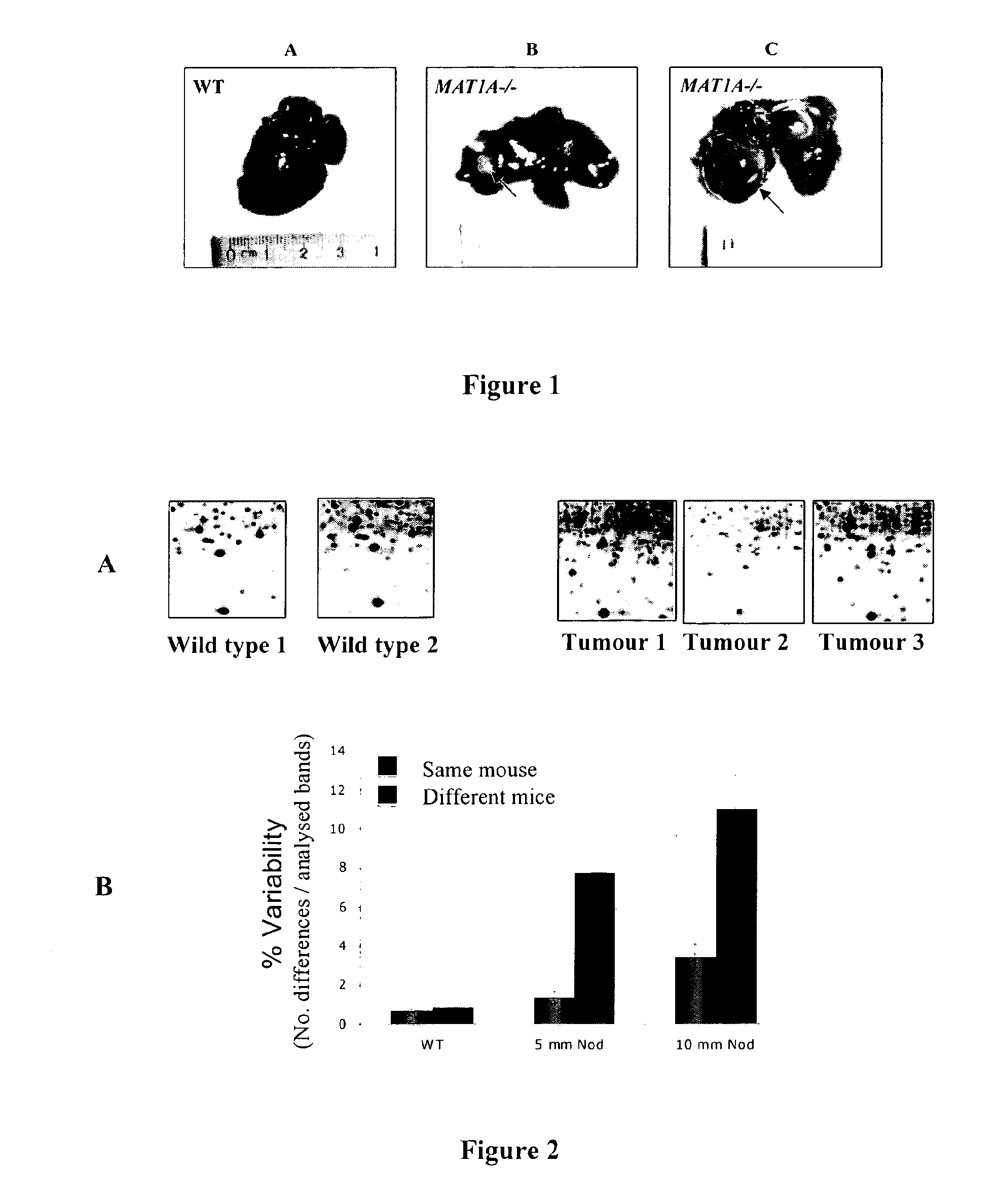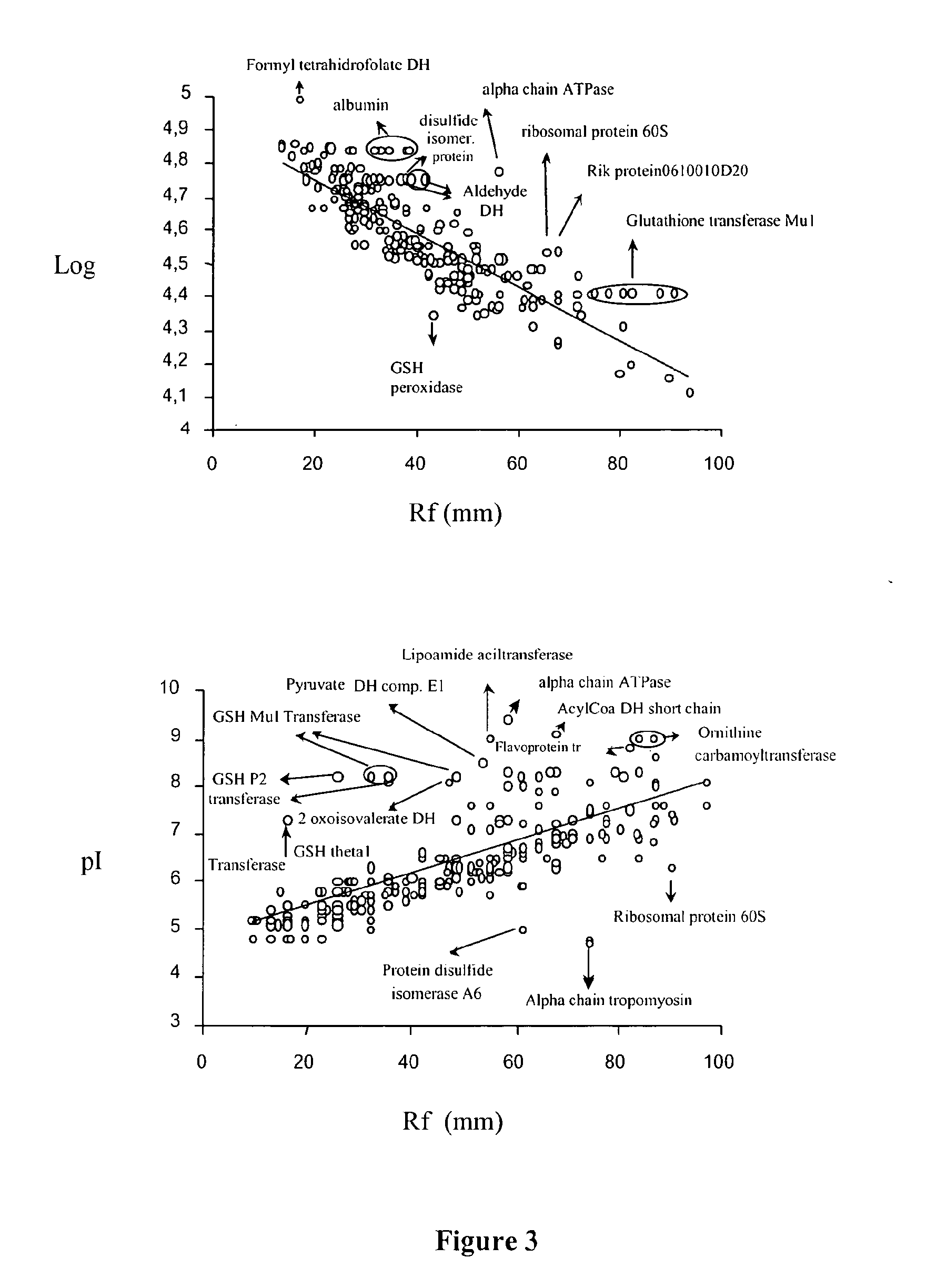Molecular markers of hepatocellular carcinoma and their applications
a hepatocellular carcinoma and molecular marker technology, applied in the field of molecular markers of hepatocellular carcinoma and their applications, can solve the problems of poor prognosis of patients with hcc, difficult detection of hcc, low sensitivity and specificity of afp levels, etc., to facilitate the prognosis and diagnosis of this disease, accurate defining the alterations
- Summary
- Abstract
- Description
- Claims
- Application Information
AI Technical Summary
Benefits of technology
Problems solved by technology
Method used
Image
Examples
example 1
Material and Methods
Laboratory Animals
[0109]MAT1A− / − mice raised in inventors' own colony and developed at inventors' laboratory (Lu S C, Alvarez L, Huang Z Z, Chen L, An W, Corrales F J, Avila M A, Kanel G, Mato J M. Methionine Adenosyltransferase 1A Knockout Mice Are Predisposed to Liver Injury and Exhibit Increased Expression of Genes Involved in Proliferation. Proc Natl Acad Sci USA 2001; 98: 5560-65) have been used. Following sacrifice of the Wild-Type (WT) and MAT1A− / − mice and extraction of the liver thereof, the size of the tumours present in the MAT1A− / − liver have been measured. The liver samples were immediately frozen in liquid nitrogen and kept at −80° C. All the experimental procedures were conducted in accordance with the institutional guidelines of the University of Navarra regarding the use of and work with laboratory animals.
Patients
[0110]Liver samples from several groups have been obtained:
[0111]a) Samples from control individuals (n=10). The control group samples...
PUM
| Property | Measurement | Unit |
|---|---|---|
| size | aaaaa | aaaaa |
| voltage | aaaaa | aaaaa |
| voltage | aaaaa | aaaaa |
Abstract
Description
Claims
Application Information
 Login to View More
Login to View More - R&D
- Intellectual Property
- Life Sciences
- Materials
- Tech Scout
- Unparalleled Data Quality
- Higher Quality Content
- 60% Fewer Hallucinations
Browse by: Latest US Patents, China's latest patents, Technical Efficacy Thesaurus, Application Domain, Technology Topic, Popular Technical Reports.
© 2025 PatSnap. All rights reserved.Legal|Privacy policy|Modern Slavery Act Transparency Statement|Sitemap|About US| Contact US: help@patsnap.com



